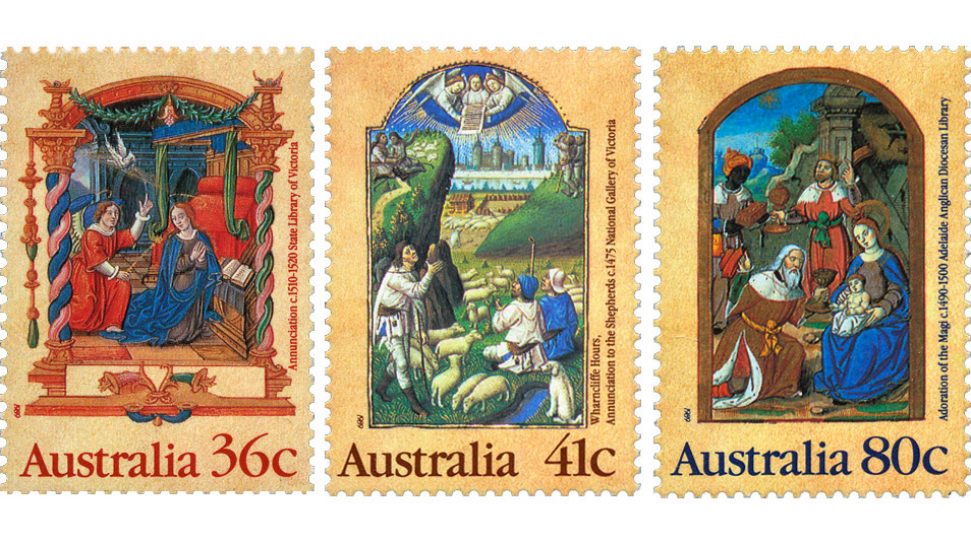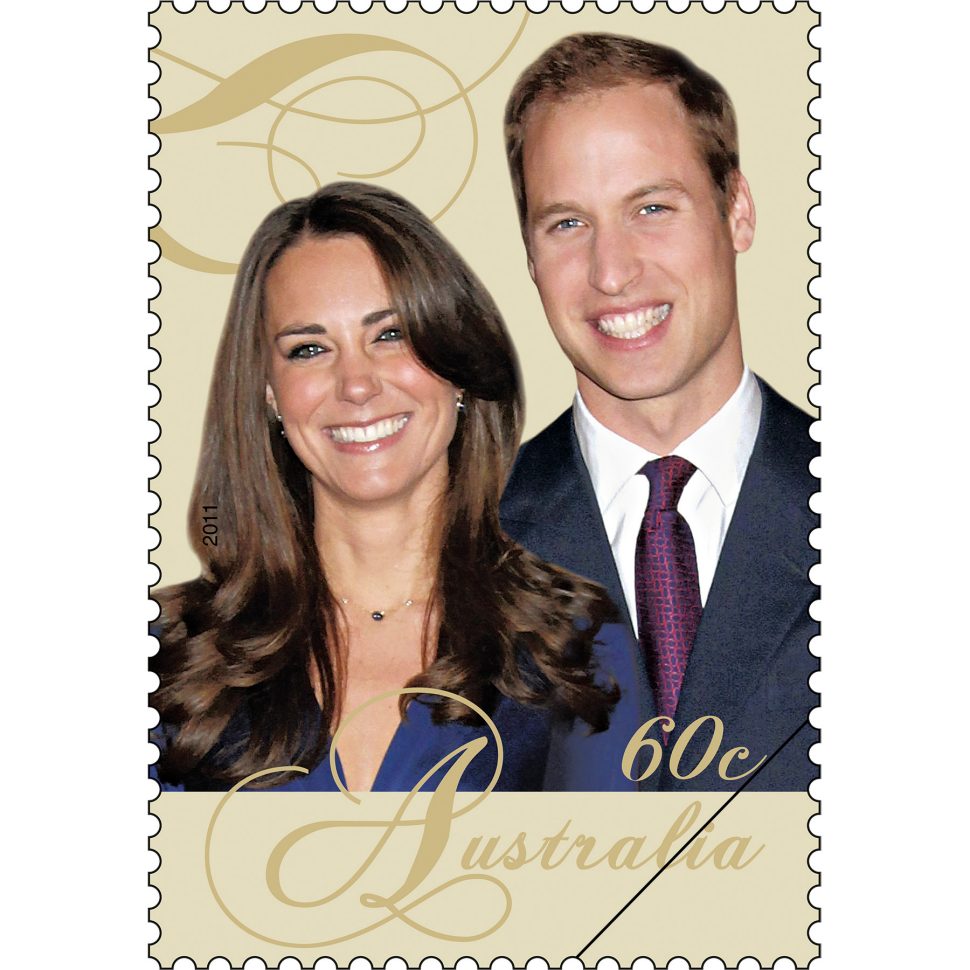In this fourth instalment in this series on stamp production, we come to the design phase of the process. Lynette Traynor is the Design Manager within the Philatelic team, and we spoke to her about how the Philatelic design studio operates.
When did you commence with Australia Post and when did you take on the role of Design Manager?
I originally started with Australia Post as a Graphic Designer in 1989 and my first stamp issue was the Christmas issue for that year. I left Post in 1993 to further my design career, returning as a contractor via my design business during 2002 and taking up a permanent position again in 2004. I took on the Studio Manager role in 2006 before becoming Manager Design, Philatelic in 2011.
What does your role entail?
I am responsible for all Philatelic design for Australia and Australian Territories including stamps, collectable products, licensed products, publications, point of sale materials and advertisements amongst others.
The majority of design is created in-house by our internal design studio team of five senior designers and myself. I also commission external creatives, particularly for specialist skills such as illustration and photography, as well as graphic design.
My role involves working closely with the other teams within Philatelic to develop and produce our stamps to the highest possible quality. I art direct the designs as they progress, ensure timeline deadlines are met, run the Stamp Advisory Committee, sign off on final artwork for design and technical correctness, and colour correct and approve proofs to go to print.
A large part of my everyday also involves the duties that typically go with managing a graphic design studio such as staff administration and managing budgets.
Can you step us through the design process for a stamp – from receipt of design brief to finished art and proofing?
The Design Manager is involved in the initial team meeting for each stamp issue, along with the category, research and channel teams, and the Philatelic manager, to determine the direction and approach.
- On receipt of the formal brief from the researcher, I allocate the job to a designer or artist and set up a briefing time with them.
- If an external creative will be working on the stamp I draw up a design commission (contract) to cover the work.
- Once the designer has been briefed, they will complement the brief with their own design research before starting to work on a number of concepts.
- When the designer/illustrator and I are happy with the concept development I present the designs to the team for their comment. At this stage we make sure that the direction the design is heading is suitable for the market we are aiming for and that the content within the design is correct. For instance, in the case of a wildlife illustration, the research team would check that the concept sketch was of the correct species and send it out to an expert to ensure that the animal was anatomically correct.
- Once given the OK, the concept is developed further into a more refined design, ready for presentation to the wider team, before being presented to the Stamp Advisory Committee (SAC) for comment.
- Following the SAC, any concerns are addressed and the final design is then sent with a briefing document to the Australia Post Managing Director & Group CEO for approval.
- Finished artwork is prepared for printing and artwork circulated to all areas for sign off. The artwork is then packaged and handed over to Sprintpak, the production arm of Philatelic, and allocated to a print production manager.
- After the artwork has been through pre-press, the production manager brings the printer’s proofs in for checking of colour and content. Once correct, I sign off the proofs as approved for print.
How long does the process typically take?
From start to finish the process is roughly 12 to 18 months for an entire stamp issue, including associated products and distribution. The design component is roughly 8 months, although is sometimes compressed to accommodate late inclusions into the stamp program for unexpected events such as the engagement of Prince William and Kate Middleton.
How do the stamp designers get their inspiration?
Inspiration comes from everywhere. Designers keep abreast of design trends around the world, attend exhibitions, travel, use the internet, follow media and are always on the lookout for what is on trend in the design space. That may not just be graphic design, but all design areas including fashion, architecture, industrial design etc.
What is the role of the Stamp Advisory Committee?
The Stamp Advisory Committee (SAC) is an external panel that meets bi-monthly to critique stamp designs for Australia and Australian Territories. All SAC members are highly regarded experts within their fields and they bring an impartial and fresh eye to our stamp designs. This ensures we achieve the highest level of design with utmost integrity.
Designs are presented for review at 400% and also at stamp size, and the committee is given a background on what the aim of the issue is. Members include design specialists in publications, textiles, a trend forecaster, design architect, award-winning book illustrator and designer, and an Australian Philatelic Federation representative. Internal members include the Philatelic Manager, Design and Category managers and the Sprintpak product facility manager.
How do you decide which stamp issues are designed in-house and which by external designers and illustrators? And what do the external talent bring to the process?
First I determine if there are any specialist skillsets required to address the brief. For instance this could be a wildlife illustrator, botanic artist, paper sculptor, a fine art photographer or similar. Often when this part of the design is outsourced, the typography and layout may still be done in-house.
I also need to balance the amount of design done in-house with some external design to ensure that Australian stamps continue to be a national representation of our visual culture. The external creatives we use are amongst the best in the world and I consider it a huge privilege to work with them on a regular basis.
What are the common design ‘issues’ that you are on the look-out for when reviewing the suitability of a stamp design?
To begin with, the designs must fulfill the usual principles of design – colour, composition, form, movement, texture, tone and typography.
They must be creative, clever, eye catching, and answer the brief. There should be no political bias or inappropriate references within the design.
Stamp design also has a number of technical peculiarities not found in other design areas. The first issue we have is that stamps have a security feature that allow them to be read by mail sorting machines. The feature requires an amount of lightly inked, or white, area within the design for the machine to read, which can cause problems for the designer.
Also, elements have a tendency to close up when a design is reduced to stamp size so all typography needs to be spaced out more openly than normal. It also needs to be thick enough to be hold at the small size.
It is also important there is sufficient contrast and detail in a design so the amazing detail can be seen by the naked eye when viewed by a customer or collector.
Aside from stamps, what else does the design studio attend to?
The design studio creates all of the associated philatelic products for stamp issues – stamp packs, first day covers, maximum cards, postmarks, stamp booklets and rolls, coin and medallion covers; licensed and souvenir philatelic products; philatelic publications such as the Stamp Bulletin; the Impressions range and catalogue; point of sale; advertising; and increasingly digital design as we move into that space.
In our next instalment, we will take a look at the product development stage of the stamp production process.
View our previous articles in the series:
How Australia Post stamps come to be
How Australia Post stamps come to be: Program development
How Australia Post stamp come to be: Research and content
This article was produced at the time of publication and will not be updated.



